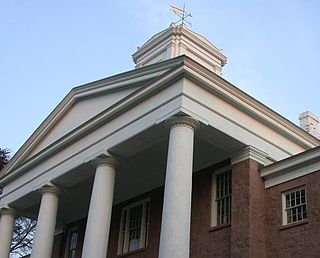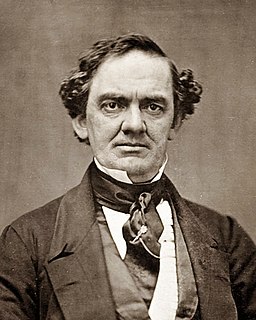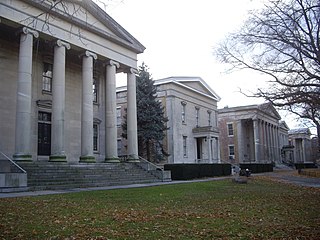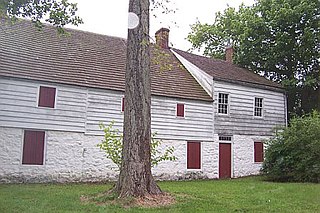
The Third County Courthouse is an 1837 Greek Revival building at 302 Center Street in Historic Richmond Town, near the geographic center of Staten Island, New York. Preceded by two smaller courthouses, it was the Richmond County Courthouse during most of the nineteenth century and was in use until 1919, [1] when it was replaced by the Richmond County Courthouse in St. George.

Historic Richmond Town is an authentic town and farm museum complex in the neighborhood of Richmondtown, Staten Island, in New York City. It is located near the geographical center of the island, at the junction of Richmond Road and Arthur Kill Road. Staten Island Historical Society and Historic Richmond Town are two different names for the same organization, reflecting its long history and evolution.

A courthouse is a building that is home to a local court of law and often the regional county government as well, although this is not the case in some larger cities. The term is common in North America. In most other English-speaking countries, buildings which house courts of law are simply called "courts" or "court buildings". In most of Continental Europe and former non-English-speaking European colonies, the equivalent term is a palace of justice.

St. George is a neighborhood on the northeastern tip of Staten Island in New York City, where the Kill Van Kull enters Upper New York Bay. It is the most densely developed neighborhood on Staten Island, and the location of the administrative center for the borough and for the coterminous Richmond County. The Staten Island terminal of the Staten Island Ferry is located here, as well as the northern terminus of the Staten Island Railway. St. George is bordered on the south by the neighborhood of Tompkinsville and on the west by the neighborhood of New Brighton.
Contents
The building is the oldest extant structure in New York City built primarily as a courthouse. A jail used to be adjacent. The building was the site of the sensational 1844 trial of Polly Bodine, who was accused of murdering her husband's sister and niece and setting fire to their house, a case commented on by Edgar Allan Poe and P. T. Barnum, among others. The packed trial resulted in a hung jury and then an early case of change of venue, first to Manhattan, which resulted in a conviction, later overturned, and then to Newburgh, New York, where Bodine was acquitted. [2]

The City of New York, usually called either New York City (NYC) or simply New York (NY), is the most populous city in the United States. With an estimated 2018 population of 8,398,748 distributed over a land area of about 302.6 square miles (784 km2), New York is also the most densely populated major city in the United States. Located at the southern tip of the state of New York, the city is the center of the New York metropolitan area, the largest metropolitan area in the world by urban landmass and one of the world's most populous megacities, with an estimated 19,979,477 people in its 2018 Metropolitan Statistical Area and 22,679,948 residents in its Combined Statistical Area. A global power city, New York City has been described as the cultural, financial, and media capital of the world, and exerts a significant impact upon commerce, entertainment, research, technology, education, politics, tourism, art, fashion, and sports. The city's fast pace has inspired the term New York minute. Home to the headquarters of the United Nations, New York is an important center for international diplomacy.

Edgar Allan Poe was an American writer, editor, and literary critic. Poe is best known for his poetry and short stories, particularly his tales of mystery and the macabre. He is widely regarded as a central figure of Romanticism in the United States and of American literature as a whole, and he was one of the country's earliest practitioners of the short story. He is generally considered the inventor of the detective fiction genre and is further credited with contributing to the emerging genre of science fiction. He was the first well-known American writer to earn a living through writing alone, resulting in a financially difficult life and career.

Phineas Taylor Barnum was an American showman, politician, and businessman remembered for promoting celebrated hoaxes and for founding the Barnum & Bailey Circus (1871–2017). He was also an author, publisher, and philanthropist, though he said of himself: "I am a showman by profession ... and all the gilding shall make nothing else of me". According to his critics, his personal aim was "to put money in his own coffers." He is widely credited with coining the adage "There's a sucker born every minute", although no proof can be found of him saying this.
















